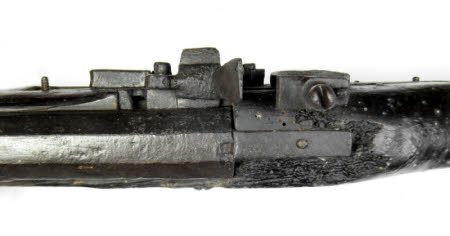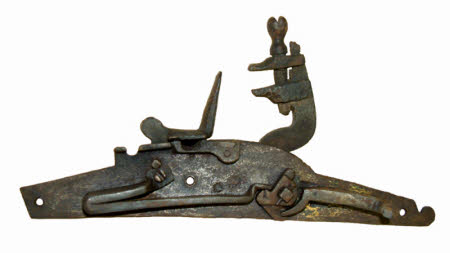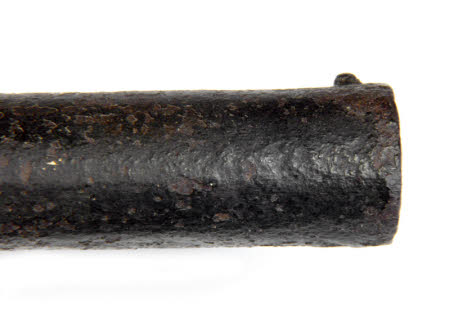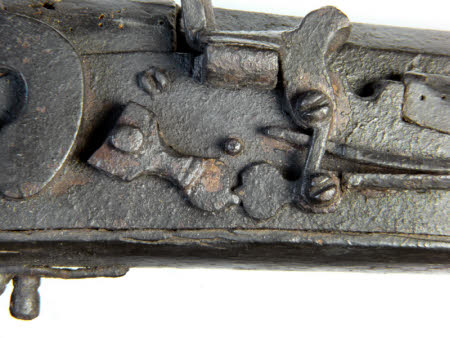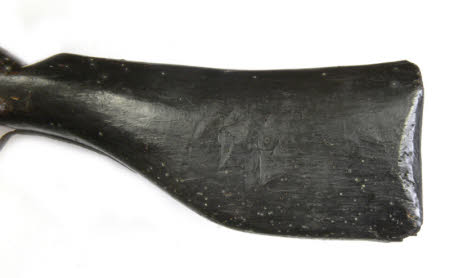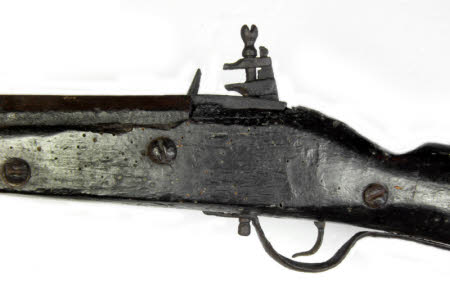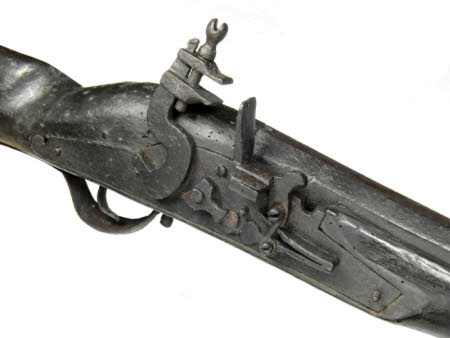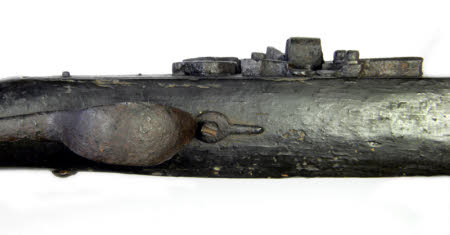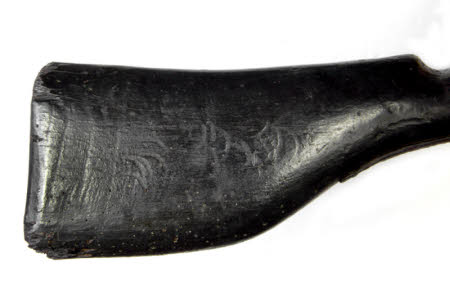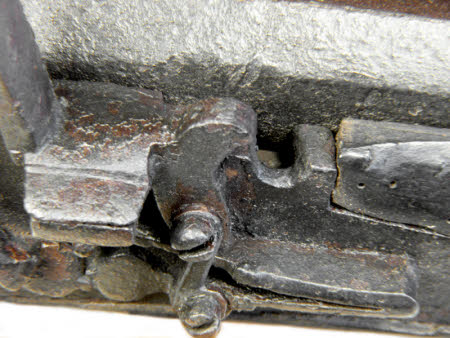Gun
Category
Arms and armour
Date
circa 1640 - circa 1650
Materials
Wood and metal
Measurements
1555 x 70 x 200 mm
Order this imageCollection
Dunster Castle, Somerset
NT 725972.5
Summary
Rare English-Lock flintlock musket, English, c1640-50
Full description
A rare English-Lock flintlock musket, English, c1640-50. Attached label reads:No 3. Flintlock with broad trigger guard. No rod holder. Stock rotted off half-way down barrell. Part of the 17th century Luttrell Armoury and described in the 1705 inventory as one of "43 Musquetts in Dunster Castle". It is thought that the Armoury was assembled in the 1670s by Francis Luttrell (1659 -1690) who formed a Militia and took part in repelling the invasion by James, Duke of Monmouth in 1685. Iron barrel, formed in 2 stages, octagonal at the breech, then round to the muzzle, separated by a turned moulding. The muzzle has a bead fore-sight; the rear sight is missing. Retained to the stock by 3 barrel pins (missing). The ramrod is missing. Length 113.5cm. Calibre 20mm. Wooden full stock, the club-form butt of unusual shape, the lower edge deeply bellied, while the top edge is slightly concave. The right side of the butt is stamped with the initial I. There is a thumb-groove formed to the rear of the barrel tang. Iron furniture comprising; spoon-shaped trigger guard with long lower nailed-on tang. The ramrod pipe is missing. A curved trigger is suspended from a pin above the rear section of the lock. English-Lock flintlock (Type 1 with lateral sear) with a long flat plate, the tail of the plate with a finial of “monster-head” form. An unusual half-round groove in the plate (unexplained) can be found forward of the pan. There is an external buffer with a flat disc-shaped finial. The cock is of squared section form. The top of the tall frizzen is also of squared form. The frizzen spring has a disc-shaped finial similar to that of the buffer finial. There is a small bridle between frizzen and the spring. The lock is retained to the stock by 3 sidenails. Overall length of the musket: 155.1cm
Marks and inscriptions
Right side of the butt : initial I
References
Godwin, 2003, Brian Godwin, “The English Flintlock: Its Origins and Development”, (with John Cooper & Michael Spencer) 20th Park Lane Arms Fair catalogue, London 2003.


